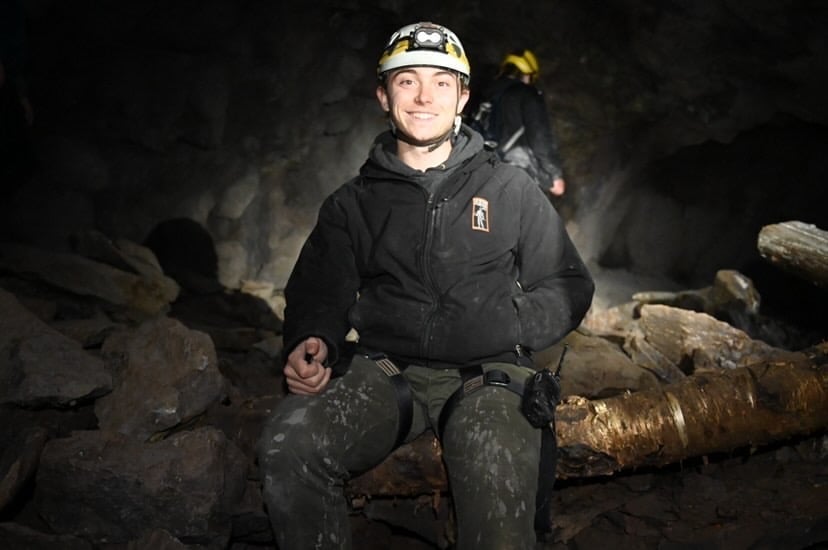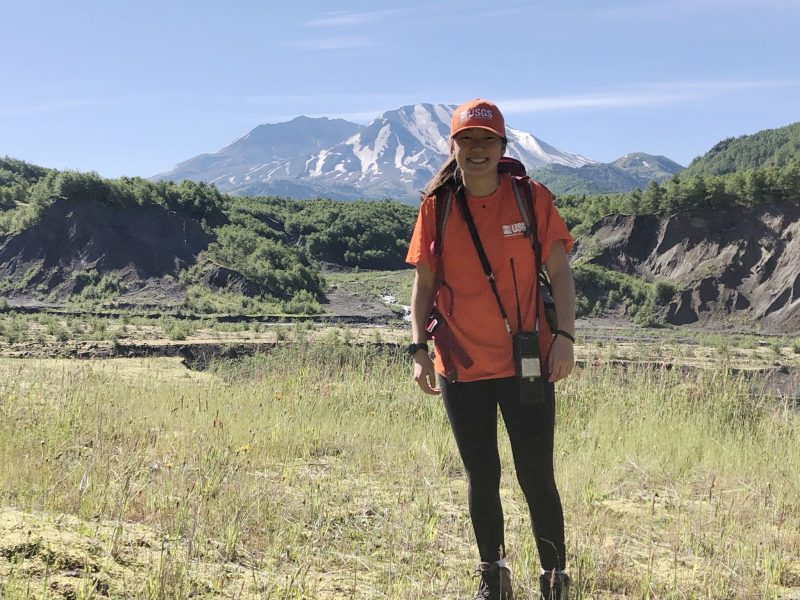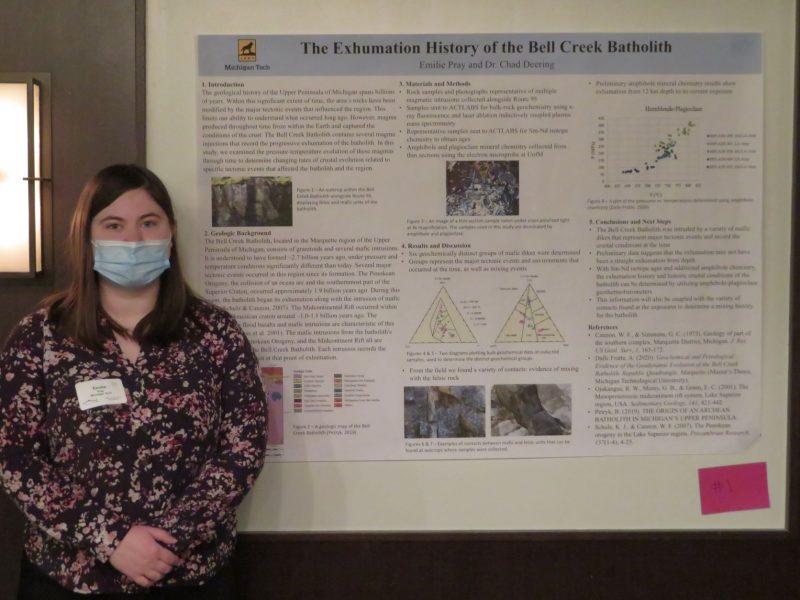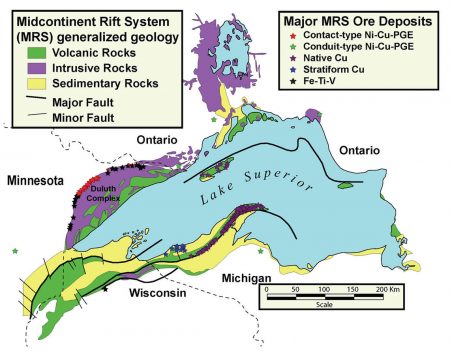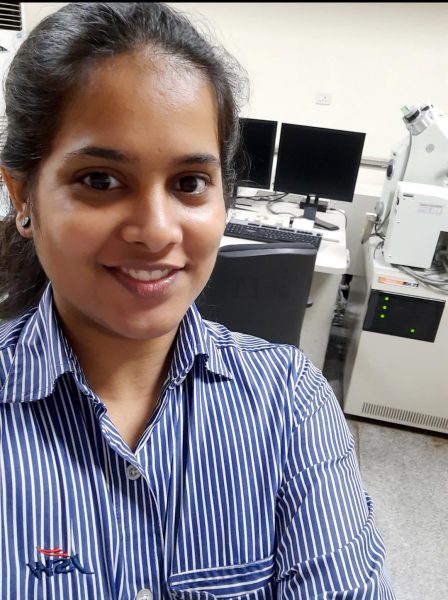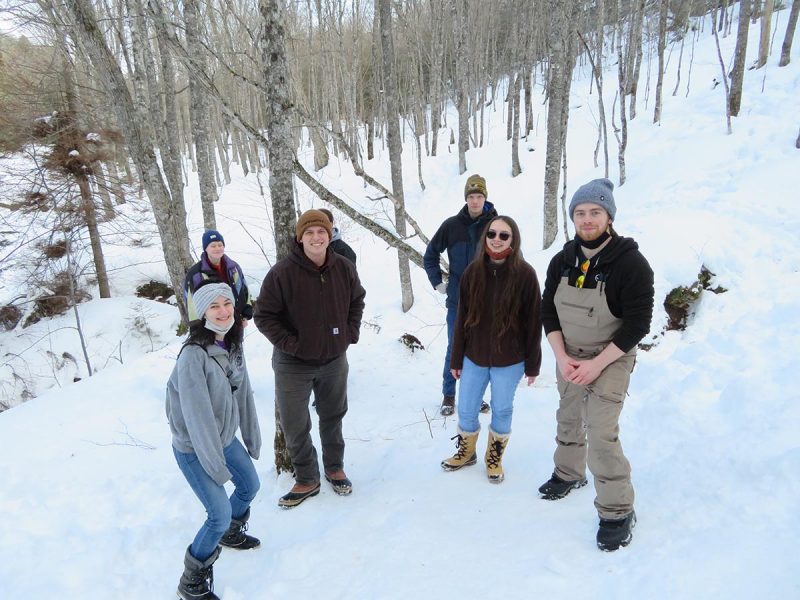Congratulations to Jake Maxon (BS Mining Engineering), who received a 2022 GMES Department Scholar Award to recognize his scholarly achievements! This award, presented to a student entering their senior year, recognizes one who best represents student scholarship in the department by participating in research or scholarly activities, demonstrating a high level of intellectual curiosity and creativity, and showing excellent communication skills. Jacob participates in research led by Associate Professor Dr. Snehamoy Chatterjee on fire size and fire location optimization in an underground mine using machine learning. Jacob is also involved in multiple mining-related activities within the campus and the community, including community-based research to map historical documents, including mining documents.
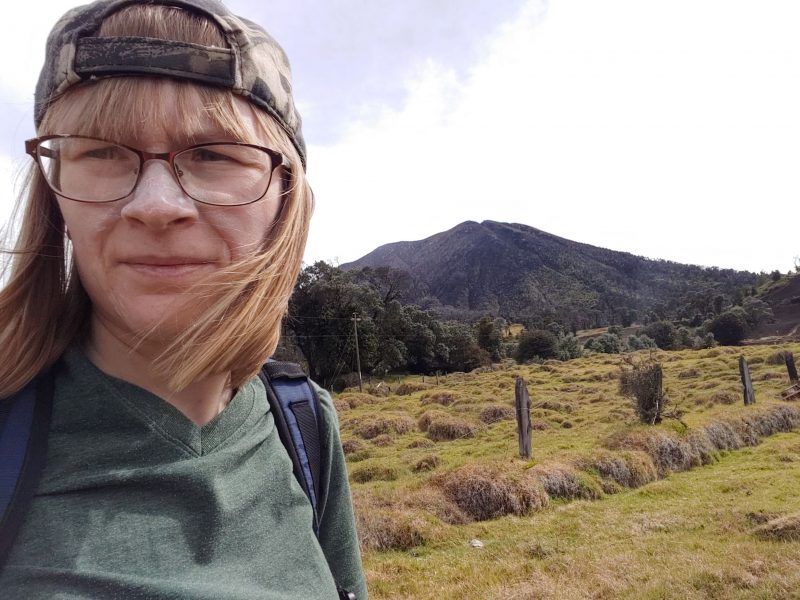
Emmeline Wolowiec, MS geology student, is recognized for her academic accomplishments, receiving the Dean’s Award for Outstanding Scholarship in the Geological and Mining Engineering and Sciences Department. A certificate of recognition for this award will be presented to Emmeline at the Graduate Research Colloquium Banquet held this spring.
Emmeline, advised by Dr. Chad Deering, is working to look at the generation of high silica magmas in Costa Rica. They’re looking at the connection between plutonic and volcanic rocks to see what that can tell about where in the crust the volcanic rocks formed in relation to the plutonic rocks and what the possible magma chamber structure looked like. Hopefully, this will give insight into how the volcanic rocks formed, whether through fractional crystallization, magma mixing, or other processes.
After joining the GMES graduate program in the fall of 2021 to pursue a master’s degree in geology, Natalea Cohen applied for and was recently awarded the 2022 Graduate Visitor Program at the National Center for Atmospheric Research (NCAR). NCAR is sponsored by National Science Foundation.
“I am honored to have received this opportunity to work with David Yates at NCAR and apply the skills and knowledge gained from my time at Michigan Tech. I will be at NCAR in spring 2023 modeling hydrometeorological data that will be collected in El Salvador this coming summer 2022.” – Natalea Cohen
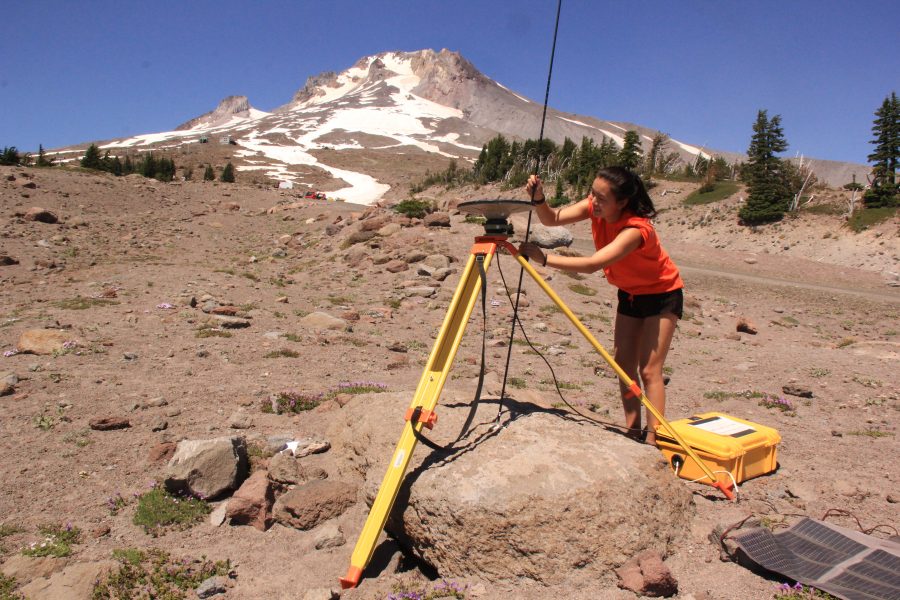
The area around Three Sisters volcanoes in Oregon is moving, and geology MS student, and NAGT/USGS intern Natalea Cohen, demonstrates the portable GPS monitoring equipment used to track it. Uplift, a subtle rise in the ground’s surface, is monitored by the USGS Cascades Volcano Observatory. Could magma underground be to blame? See how radar satellite data and GPS equipment come together to get scientists one step closer to knowing the truth: https://www.youtube.com/watch?v=0QfARy8zPEk
Emilie Pray, a geology senior in the Department of Geological and Mining Engineering and Sciences (GMES), won first place in the American Institute of Professional Geologists (AIPG) Michigan Section Annual Student Poster Contest.
Pray’s poster was titled “The Exhumation History of the Bell Creek Batholith.” Her research has been advised by Chad Deering (GMES).
Katherine Langfield, a geology master’s student, received a research grant from the Institute on Lake Superior Geology (ILSG). The $1,000 award will help defray the research costs for her proposed work on the Hancock Fault. A portion of the work will be conducted in the Quincy Mine adit in West Hancock. Katherine is advised by Research Professor, James DeGraff.
The ILSG Student Research Fund is available for undergraduate or graduate students conducting research on the geology of the Lake Superior region.
Poorva Kadrolli, a Master’s student in Mining Engineering in the Department of GMES, has won a highly competitive SRK scholarship!
SRK is a global consulting firm in mining and exploration geology and provides scholarships in Australia and North America to encourage and support students undertaking graduate studies and help them complete master’s and doctoral degrees in fields related to the mining industry.
The scholarship selection process is very thorough and includes writing a research proposal by the student. Poorva’s research is in joint simulation of material-type and mineral grade using multiple-point simulation and machine learning.
Poorva is advised by Dr. Snehamoy Chaterjee, an Associate Professor and the Witte Family Faculty Fellow at the Department of GMES.
The 2021 American Institute of Professional Geologists (AIPG) Student Chapter of the Year Award goes to Michigan Technological University for the second year running!
Each year, AIPG recognizes the most outstanding student chapter for its activities, achievements, and contributions to the Institute. Nationwide there are 55 student chapters at AIPG. The award letter states: “the Student Chapter at Michigan Tech stood out among the AIPG Student Chapters in the nation this past year, and are highly deserving of this distinction and honor.”
Currently, the chapter officers are Elana Barth (President, Geology), Olivia Salvaggio (Vice President, Geophysics), Emilie Pray (Treasurer, Geology), and Nolan Gamet (Secretary, Geology). The officers during the year of the award were Elana Barth (President, Geology), Breeanne Huesdens (Vice President, Geological Engineering), Emilie Pray (Treasurer, Geology), and Makala O’Donnell (Secretary, Geological Engineering).
Chad Deering, Associate Professor in the Department of Geological and Mining Engineering and Sciences, and David Adler, a Mannik & Smith Group Certified Professional Geologist (B.S. Geology ‘82), advise the Michigan Tech chapter.
Congratulations once again on a job well done. The GMES department is proud of your continued success!
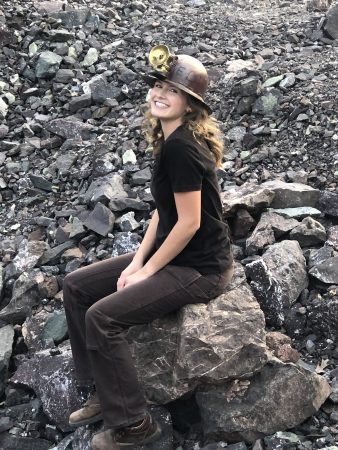
Emily Street, a fourth-year mining engineering student at the Department of Geological and Mining Engineering and Sciences, received the prestigious, highly competitive Copper Club Lord Bagri Scholarship. Her essay, ‘The Importance of Copper in the 21st Century,’ gives the reader a passionate viewpoint, written by an outstanding, hardworking student ancestrally connected to the industry.
The Copper Club, Inc, formed in 1944, is the leading organization for networking, educational grants, and events for those who support the copper industry. The Copper Club Scholarship Fund provides scholarships to students majoring in geoscience or other fields related to the production of copper or copper products. A $15,000 award goes to one student who shows exceptional merit demonstrated by excellent grades, with a necessity for financial aid. In letters of recommendation, Michigan Tech faculty can quote praising, “… she will be a role model for the next-generation mining and geosciences students”, and “…Ms. Street will have a transformative impact on the mining industry as she transitions from student to professional.” A well-deserving student to receive this award, indeed.

“I was honored to be nominated as MTU’s representative for the Copper Club Scholarship 2021-22, and I am humbled to represent the college as a recipient of The Lord Bagri Scholarship. I am thankful to be a part of the mining engineering program at MTU and to have the opportunity to be taught by such passionate and knowledgeable industry leaders. I am currently working as a summer mine engineering intern at LafargeHolcim in Presque Isle, Michigan; I hope to use the hands-on experience I gain at the quarry this summer to further my knowledge in my senior year in the program. Attending Michigan Tech’s newly resurrected mining engineering program, while a rigorous curriculum, has taught me more than I could have ever imagined. I am proud to be a student here, at what was originally the Michigan Mining School, and to be able to work as a miner in the industry that brought my family to the Keweenaw nearly one hundred years ago!” – Emily Street
https://www.copperclub.org/scholarships-awards/
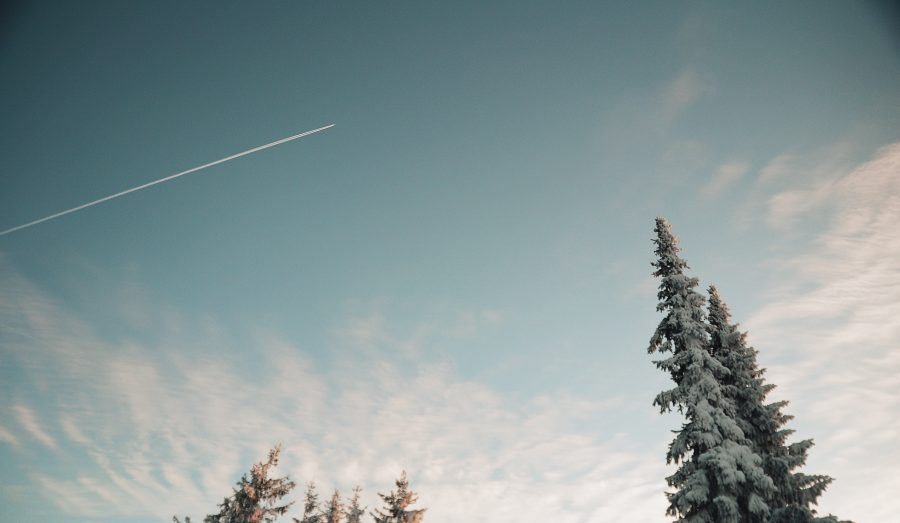
Dr. Adam Durant (MS Geology ’06, PhD ’07) discussed how modifying flight plans lessen long-lasting contrails and reduce climate impacts–so-called green aviation. Physics professor Raymond Shaw and Professor Emeritus Bill Rose, who advised Adam in his graduate studies here, host the discussion.
It’s not rocket science. It’s harder — or at least harder to predict. Clouds are often referred to as the wildcard of climate modeling, and while some basic physics have become much clearer using tools like the cloud chamber at Michigan Technological University, atmospheric science remains a fascinating and complex space.
Shaw, distinguished professor of physics and director of Michigan Tech’s atmospheric sciences doctoral program, studies ice crystal formations in clouds. When Durant worked with him as a graduate geoscience student, the team studied how volcanic ash and frigid water interact in the atmosphere. For Durant, experimenting with specks of dust and drops of supercooled water coalesced into an ongoing interest in the interaction’s effects on airplanes — and the industry’s climate bill. Drawing on his interdisciplinary background, Durant started the company SATAVIA in 2013.
In their Q&A, Shaw (RS) and Durant (AD) explain how rerouting airplanes to minimize contrails can have the biggest impact with the smallest changes.
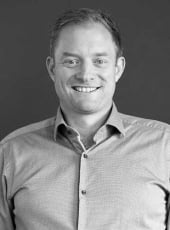
Adam Durant, CEO SATAVIA
Research Interests:
– Green aviation
– Ice crystal morphology and cloud formation
– Volcanic ash plumes
– Sustainable business
Q: Why focus on contrails to curb climate change impacts?
AD: It’s not just direct engine emissions that matter in terms of aviation’s climate impacts. Non-carbon dioxide sources — like the climate forcing from contrails — make up almost two-thirds of the industry’s impact, which is a surprisingly big number. In fact, it equates to 2% of all human-caused climate change.
RS: Contrails are pretty and localized, so it’s understandable that few people would guess they’re of consequence. And it’s relatively rare flights that make these long-lasting contrails, which are heavily weighted in terms of their climate impact.
AD: Yes, of about 500 flights, only one or two make these kinds of contrails.
Q: How does SATAVIA’s software help predict contrail formation?
AD: We are a data analytics company, building software that uses cutting-edge atmosphere and climate science. We use a commercial cloud structure to create a digital twin of the Earth’s atmosphere from surface to space, quantifying many key meteorological parameters like temperature, humidity, cloud cover and other factors that affect flight operations. We aggregate that information and apply it to different use cases, including contrail formation and other applications such as contaminant exposure and corrosion factors. Predicting contrail formation and persistence in the atmosphere is complex, so it becomes a big data problem – unless you’ve got a high-performance atmospheric digital twin, you won’t be able to crunch through the data properly. Right now, we’re working with a major Middle East airline through a collaboration with Aviation X Lab, a Dubai-based aviation incubator. They want to be proactive about assessing their impact, and they’re helping us validate our models. The next challenge is software integration, so we can help airlines optimize flight paths for contrail prevention while minimizing fuel burn.
Q: How can industry, universities and government groups work together?
RS: It’s important to acknowledge that while Michigan Tech doesn’t have direct collaborations with SATAVIA, it was a former student who started the company and a new graduate, Subin Thomas, starts there soon as a key player on their science team. Academia can play a role by training people in the fundamental science so they can carry on innovation within the private sector. We also work with agencies, like our partners at the National Center for Atmospheric Science (NCAR) and U.S. Department of Energy (DOE). For example, a current graduate student, Elise Rosky, is at this moment at NCAR flying a holographic instrument through clouds to investigate how ice forms and grows. Who knows where that fundamental research will lead, and even how it might tie into the science of contrails?
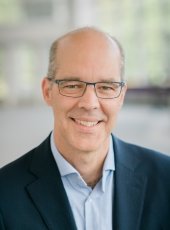
Raymond Shaw
Research Interests:
– Atmospheric Physics
– Cloud Physics
– Nucleation
– Turbulence
– Digital Holography
AD: We all want to solve real world problems. There’s a lot more to solving problems than throwing science at it. If it doesn’t cost money or make money, it’s hard to get business to care. As the cost of carbon rises, there is going to be more and more incentive for airlines to fly smarter and greener. With our model, we not only assess a flight plan and help make changes that actually lower aviation’s climate impact, but we also estimate what a company can save in associated carbon credits and carbon offsets.
Q: How did your Michigan Tech research help make these kinds of collaborations possible?
AD: This brings me back to doing my PhD on volcanic ash with Bill Rose, who blended a lot of disciplines. I felt like an atmospheric scientist but my degree was geoscience. I moved on to a climate research group next — mostly climate modelers and remote sensing experts — and that experience also brought me closer to policy.
RS: Sometimes, Adam, we jokingly call students like you a gluon [bad physics joke] — “Well, Bill does this and Raymond does that, so we need a go-between.” To Bill’s credit, he was always roving and looking for people who could help him solve the problems he was working on. So, Adam asked in his research: What happens when we put ash in a supercooled droplet? It was a logical next step to ask what happens when an airplane flies into an ash plume.
Q: What inspires you in your work?
AD: I want to take tangible action on climate change — that’s what my mission has become. We’ve been thinking about our vision as a company and it always comes back to solving climate change.
RS: We say all the time that we do basic science to help society. Examples like Adam’s company make that true. In some ways, it’s easier to stay in academia, but moving into the private sector means there is so much more potential for influence. Much of research is curiosity-driven and with a genuine interest in solving fundamental problems, with the hope that eventually the solutions will make a difference. But no one would fund us to solve puzzles every day; we hope that when we train students that our fundamental work will be connected to the private sector and help make the world a better place.
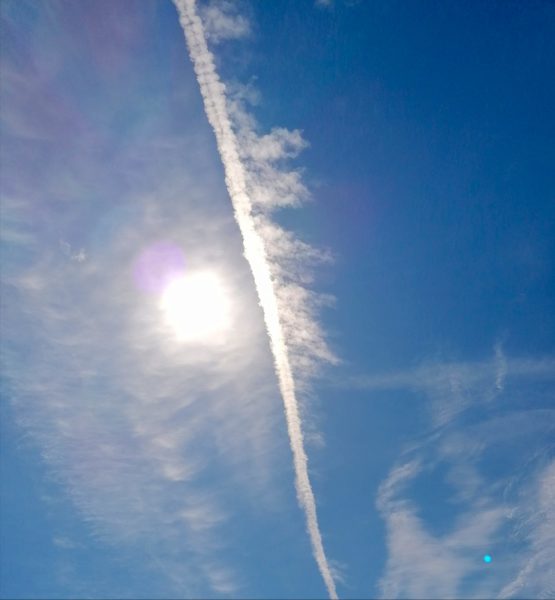
Q: What are challenges that remain ahead?
AD: Raymond, here is what we are always asked: Do we know enough about the science of contrail formation and whether we can predict it?
RS: Well, the basic physics is there. The part that is complicated, which falls under current research, is how persistent will a contrail be — will it be ice or water, and what’s the crystal shape? The good news is that the basics are clear.
AD: I agree that the fundamental science is sound, and that the challenge facing us now is scaling and creating contrail forecasts at flight altitudes so that aviation operators can avoid making them. And policy and regulation — that is what will influence how big organizations deal with this problem.
RS: That’s the surprising part. Thinking from the company spreadsheet point of view, in the right economy, SATAVIA’s approach can actually save money.
AD: Yes, many companies already pay to offset their carbon emissions. Changing flight plans would make a bigger difference and save them more money. What we need to work on most from a technical perspective is software integration, and that’s going to take time and close partnerships with more airlines.
Q: The pandemic changed travel. How has this impacted your work?
AD: Before COVID, much of our work focused on how atmospheric and climatic factors can damage aircraft engines and airframes, and responding to that with smarter condition monitoring and predictive maintenance.
But as the pandemic began and continued, we pivoted to focus more on aviation’s impact on climate. We just happened to be at the right place at the right time with our ice crystals research. People care about green aviation now, to the extent that it will influence their choice of airline, though some consumers will always be driven by the cheapest prices. In the near term, it’s likely to be business travelers who care most about the green credentials of a flight.
RS: Even before the pandemic, I was starting to notice an uptick in the number of colleagues who would say, “I’m not going to go to that meeting because I’m trying really hard to minimize the aviation part of my carbon footprint.” Or saying, “I can’t go on that airline, I’m going to choose this other airline because they’re doing more to solve this problem.” And I do think the pandemic has made more of us aware of what can and can’t be done. The nice thing is that we can have a global aviation industry and mitigate the impact to some extent. As you think about returning to air travel, why not expect more from the airline you’re flying with? Because there are actions they can take. Contrails are something most people would never think about, but SATAVIA’s work shows that it’s possible to do something about their climate impacts.
